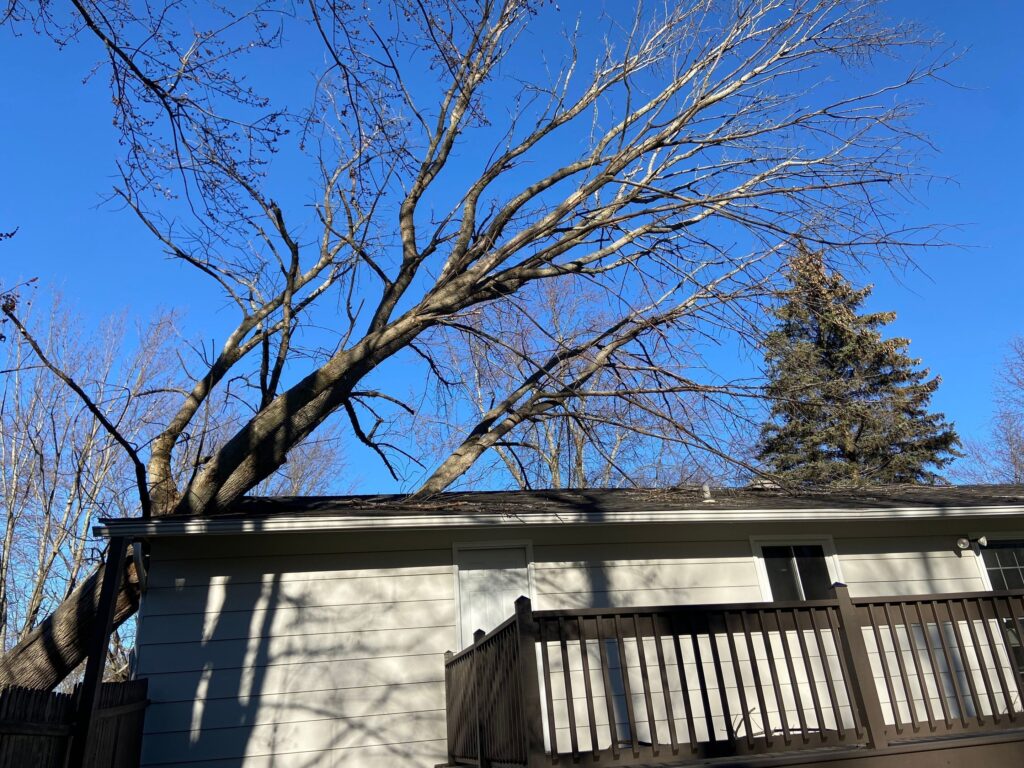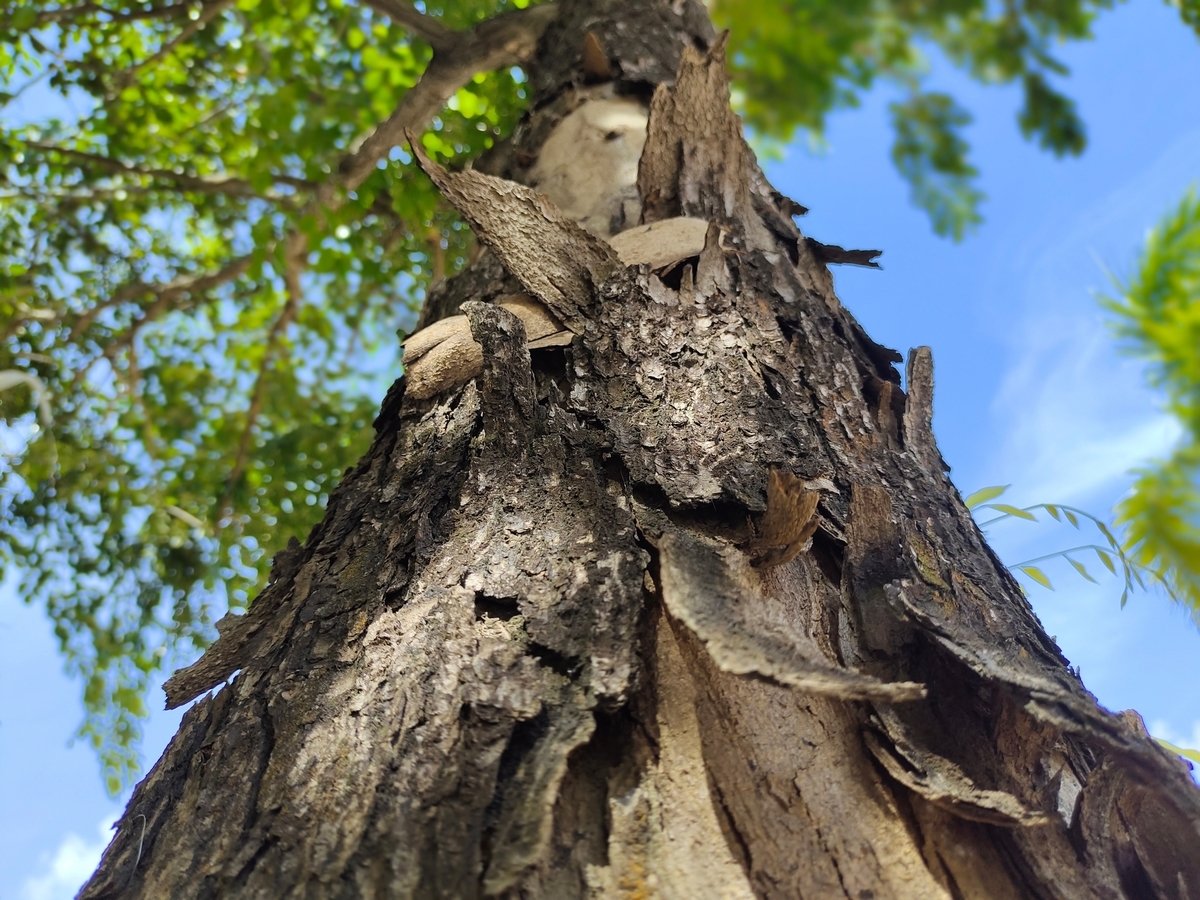This August has been extremely hot and dry in the Rochester, NY area. While we may hide indoors with the AC, our trees don’t have that luxury. Extreme heat and dry spells can quickly cause heat stress on trees, impacting their health and long-term survival.
Whether you’re caring for mature maples or caring for young trees in the summer, knowing the warning signs and how to respond can make all the difference. Let’s get started!
Signs of Tree Heat Stress
Throughout July, August, and September, the heat is at a yearly high, and rain is rare when our plants need it most. Consistent hot and dry conditions can cause trees visible distress. Recognizing these symptoms early can mean the difference between a tree that bounces back and one that declines beyond saving. Here are some of the most common warning signs that your tree may be struggling with heat stress.
Cracking Tree Bark
If you notice vertical splits or peeling on the trunk, it could be a sign of tree bark cracking due to heat stress. Hot and dry weather can cause rapid expansion and contraction of tree tissue, especially if the tree’s water intake is low. This damage makes the tree more vulnerable to pests and diseases.
Wilted Tree Leaves
Wilted leaves are one of the first warning signs. Leaves may curl, turn brown along the edges, or drop prematurely. In severe cases, the canopy may thin out, reducing the tree’s ability to photosynthesize.
Drooping Tree Branches
When you see a tree drooping branches or even tree branches dying, it often means the tree is prioritizing survival by shutting down water flow to particular areas. This is a stress response, and a clear signal your tree needs help.

How to Help Trees Recover From Heat Stress
The good news is that with quick action, many heat-stressed trees can recover. The right combination of deep watering, soil protection, and careful pruning can reduce stress and set the tree on a path to health. Here’s how to give your tree the best chance at survival during hot and dry weather.
Watering Trees
Deep, slow watering is key. Rather than frequent shallow watering, let the hose run at a trickle at the base for 30–45 minutes every few days. This encourages deep root growth and better drought resistance.
Mulching Trees
Applying 2–4 inches of organic mulch helps the soil retain moisture, keeps roots cool, and reduces competition from grass and weeds. Avoid piling mulch directly against the trunk; leave a gap between the trunk and mulch to prevent rot and pest issues.
Tree Trimming
Proper tree trimming is excellent for taking preventative action during cooler months. Tree trimming can improve airflow, remove damaged branches, and reduce tree stress. For heat-stressed trees, avoid heavy pruning until the weather moderates.
Tree Removal
In severe cases, especially if the tree poses a safety hazard, professional tree removal may be necessary. Local experts familiar with tree removal in Rochester, NY, can assess whether recovery is possible or if removal is the safest choice.
Caring for Young Trees in the Summer
We recommend planting trees in cooler weather seasons, like spring or fall, when trees are dormant. Planting during the growing season can make it harder for trees to grow deep roots since they are working hard to photosynthesize and grow lots of leaves. Trees also need a lot of water to become established, so a dry summer can make that difficult.
How to Care for Young Trees in the Summer
Caring for young trees in the summer requires extra care. Water them deeply and slowly 2–3 times per week until established. Mulch is essential for young root systems in hot weather. Applying 2–4 inches of organic mulch around root areas (not the trunk) helps the soil retain moisture, keeps roots cool, and reduces competition from grass and weeds.
Comprehensive Tree Care in Rochester, NY
Caring for heat-stressed trees requires a mix of preventive care and timely intervention. At Woodeez, we provide professional tree services. We can help identify what a tree needs, like tree trimming, or whether it is time for a tree removal.
Tree Heat Stress FAQ’s
Looking for something else related to tree heat stress? Here are some frequently asked questions from our customers. Don’t see what you need? Call our team at 585.352.8733, and we will get in touch as soon as possible.
Can trees recover from heat stress?
Yes, with timely care such as deep watering, mulching, and pest prevention, most trees can recover. However, severe or repeated stress can shorten a tree’s lifespan.
Should I plant a tree during a hot summer?
It’s not ideal, but it can be done with careful planning. Select heat-tolerant species, water consistently, and protect roots with mulch.
How to know when to call a tree care professional?
If you notice large sections of dead branches, deep bark cracks, loud creaking from dead areas, or significant leaf loss, it is time to get in touch with a tree service provider. These signs can predict that a tree may come down on its own, risking damage to your property. It is much better to take care of a tree before an emergency arises.
Can you fertilize in hot weather?
We suggest not fertilizing in hot weather. Tree fertilizing during extreme heat can burn roots. Wait until cooler weather or ask one of our team members for heat-safe nutrient boosts.

